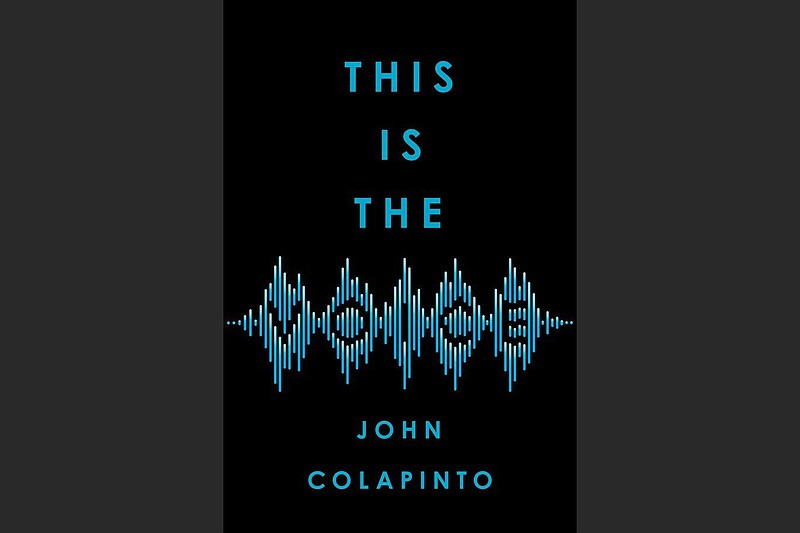John Colapinto was a singer.
A self-taught amateur. He was probably pretty good, or at least he probably had an interesting quality in his voice because he was drafted to be the lead singer in the Rolling Stone magazine band that Jann Wenner was putting together.
Rock 'n' roll requires something other than pristine precision and note-caressing technique; it requires a quality indicative of soul or at least a rich emotional inner life.
But like most writers who sometimes sing, Colapinto took his singing voice for granted. He didn't take the precautions that some professionals take, and didn't consider the risks of rasping and ripping through garage-band standards like "Mustang Sally" and "Louie Louie." He didn't consider that his vocal cords have no pain receptors.
So he hurt his voice.
When he asked the lady in the elevator of his new apartment building what floor she wanted, she responded:
"You have a serious voice injury."
She was a voice coach who worked with Broadway singers. She convinced Colapinto to see a laryngologist — a doctor who specializes in the vocal cords. He did, but put off a recommended surgical procedure that would have required Colapinto to maintain postoperative vocal silence for six weeks. After a while, his voice came back — sort of. It was raspy, rattle-ly.
"But for all these annoyances and discomforts, I was not (I told myself) disabled," Colapinto writes in his new book "This Is the Voice" (Simon & Schuster, $28). "I could converse. I could work. By these lights, the surgery was not necessary."
A decade later, Colapinto is working for The New Yorker, doing a profile about Dr. Steven Zeitels, a vocal surgeon at Boston's Massachusetts General Hospital who had treated any number of stars and celebrities and had recently removed a vocal polyp that had threatened singer Adele's career. She had thanked him from the stage at the Grammy Awards.
I remember Colapinto's piece about Zeitels. What he didn't mention in that piece but does in the book is that Zeitels immediately picked up on Colapinto's old vocal injury and more or less insisted upon "looking at" his throat. He found a polyp "magnitudes bigger" than the one Adele had, one that made it impossible for Colapinto to sing.
If Colapinto had decided to write a book about his injury and recovery that may have made a fine book. But "This Is the Voice" is more ambitious and remarkable, a layman's deep dive into the science and mystery of the human voice. It begins with a fascinating investigation of how babies begin to acquire language and learn to express it even before they are born.
"The uterine wall muffles voices, even the mother's, into an indistinct rumble that permits only the rises and falls of emotional prosody to penetrate," he writes, "in the same way that you can tell through the wall you share with your neighbors that the people talking on the other side are happy, sad or angry, but you can't hear what they're actually saying."
Colapinto points out how babies are born capable of learning — and speaking — any of the world's 7,000 or more languages, but that it takes only a few weeks or months for their ability to easily learn how to make most of those sounds. We keep the sets of speech sounds we need and let the others go.
He delves into the origins of human speech, and convincingly argues that we owe "our planetary dominion not to language alone, but to our special talent for turning that awesome attribute into sound."
A tremendous work of journalism — Colapinto does a lot of legwork, meeting with doctors, observing political campaigns and traveling up the Amazon to meet the Piraha, a reclusive tribe with an especially musical language — "This Is the Voice" also manages to be very intimate, very much the story of a man who eventually recovers enough of what he'd lost to growl, maybe tonelessly but exuberantly, through a version of the Clash's "Brand New Cadillac."
Which would be the final scene in the movie Hollywood could make of this far-ranging and insightful book; a movie that could never be as good as what we read.
■ ■ ■
I promised some book recommendations from others in a recent column; the first one comes from my colleague Jack Schnedler, retired features editor for this newspaper who holds a master's degree in American history from Northwestern University.
He recommends Harold Holzer's "The Presidents vs. the Press" (Dutton, $30), which he says is "the most eye-opening book on my 2020 shelves."
Jack writes: "Rather exhaustively subtitled 'The Endless Battle Between the White House and the Media from the Founding Fathers to Fake News," this action-filled history ... maintains that the essence of their confrontation is built into the fabric of the nation.
"Readers who believe Trump has uniquely shredded that fabric with his relentless slanders and libels against the Fourth Estate may blanch or bristle at some of Holzer's assertions. Here's one: 'Barack Obama may not have called hostile journalists enemies of the people. But those whom his administration tried to isolate or prosecute might argue that some of his actions spoke louder than his successor's words.' "
Email: pmartin@adgnewsroom.com | blooddirtangels.com
